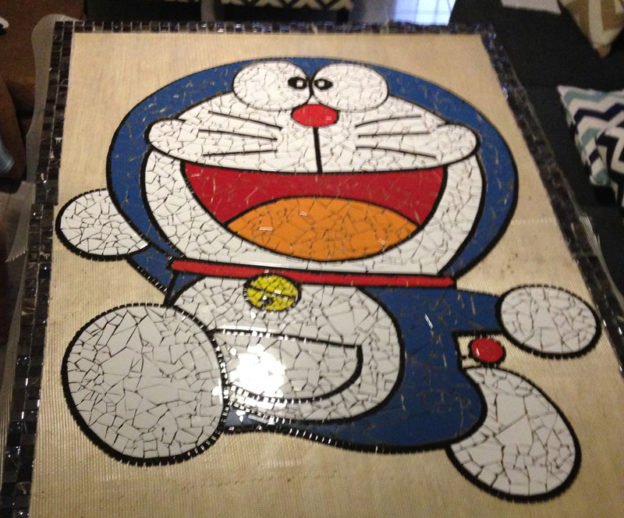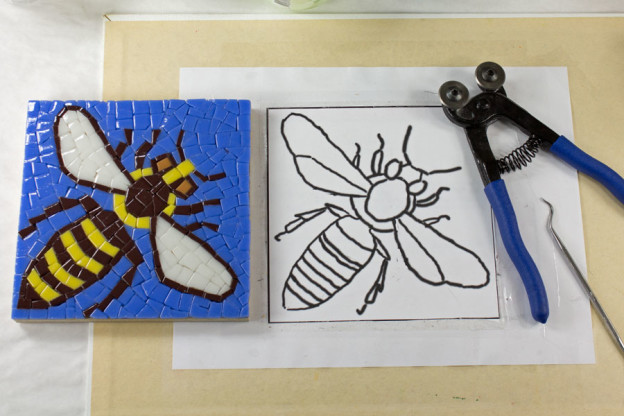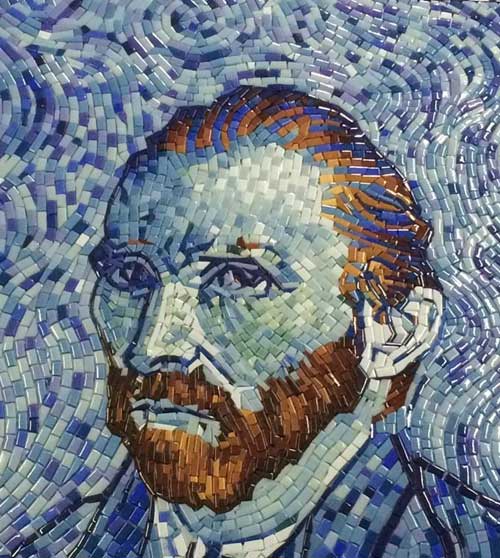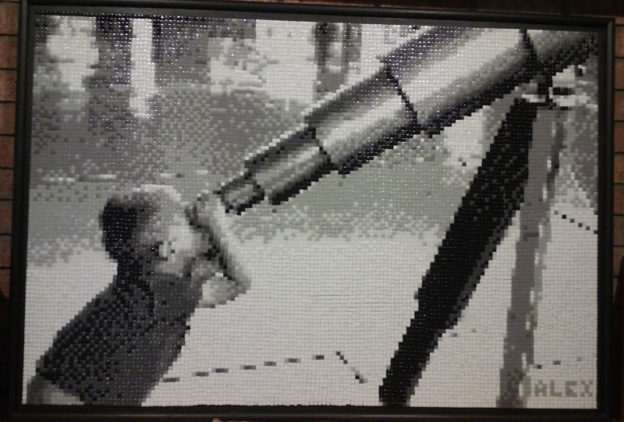Tag: elementile
-

Doraemon Japanese Manga Mosaic Installation Video
Rolando Jose made a mosaic of his favorite cartoon character Doraemon using broken pieces of glazed ceramic tile obtained locally in Panama and our black 12mm recycled glass tile for outlining. Rolando Jose made a video of creating and installing the mosaic and used Doraemon’s theme song for the soundtrack. Doraemon is a Japanese manga character. The…
-

Using Contact Paper to Transfer A Mosaic Design
Choice of Pattern This method for transferring a mosaic design with contact paper works whether you are improvising on a quickly sketched cartoon or carefully following a detailed pattern for each piece of tile. This method reverses the mosaic from left to right in a mirror effect because the tile is laid upside down onto the sticky pattern and…
-

Van Gogh Self-Portrait Mosaic
Recently Doug Harris of Elementile sent me some photos of a mosaic rendering of Vincent Van Gogh’s 1889 self-portrait, and it is definitely worth seeing. I think some of the best examples of how to use adamento in mosaic to convey a sense of motion are actually demonstrated in Van Gogh’s painting, and this self-portrait was a natural choice for mosaic…
-
Mosaic Christmas Tree Ornaments
Please email us pictures of your Christmas tree ornaments made from our mosaic ornament bases. I would really like to receive a picture of one made to look like a globe of the Earth. I think a globe ornament would look spectacular, especially in mosaic, but I haven’t had the time to make one myself due to all…
-
New Recycled Glass Mosaic Tile Assortments
Color family assortments of 12mm recycled glass mosaic tile are now available. The 12mm Elementile brand of tile is some of our most affordable tile. It also cuts into extremely small pieces with minimal glass dust, shards or scrap. Recycled glass mosaic tile by Elementile is now available in 12mm color assortments. It is our…
-
Micromosaic
Micromosaic is merely mosaic which is made from small to extremely small pieces of tile. Note that there isn’t a formal definition of how small the pieces need to be in order for a mosaic to be classified as micromosaic, but some of the better Roman examples are small mosaic insets in brooches and rings…

